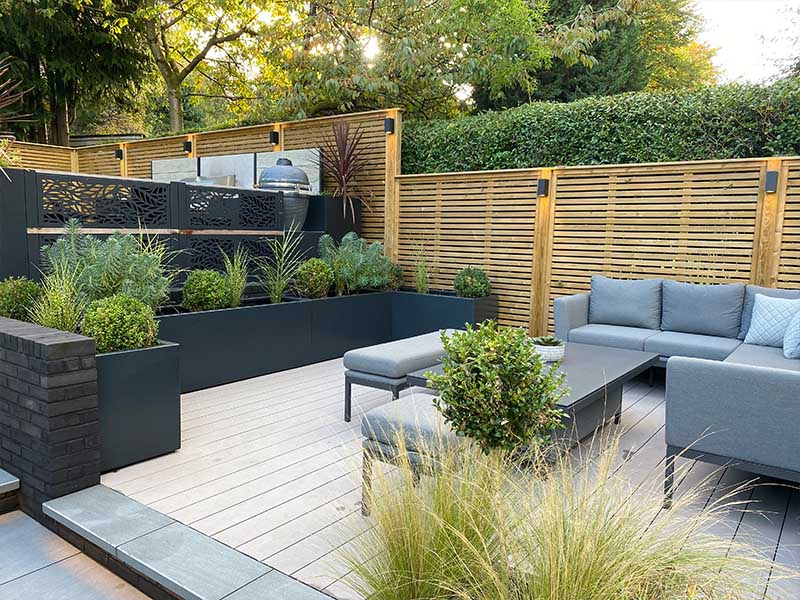
Sun Apr 06 - Written by: Denis Maina
15 Easy Steps to Design the Perfect Garden Layout
Creating your dream garden doesn't have to be overwhelming. Whether you're starting from scratch or giving your outdoor space a makeover, a well-planned garden layout can transform any yard into a stunning oasis.
With the right approach, you’ll be amazed at how simple it can be to design a garden that works for your lifestyle and budget.
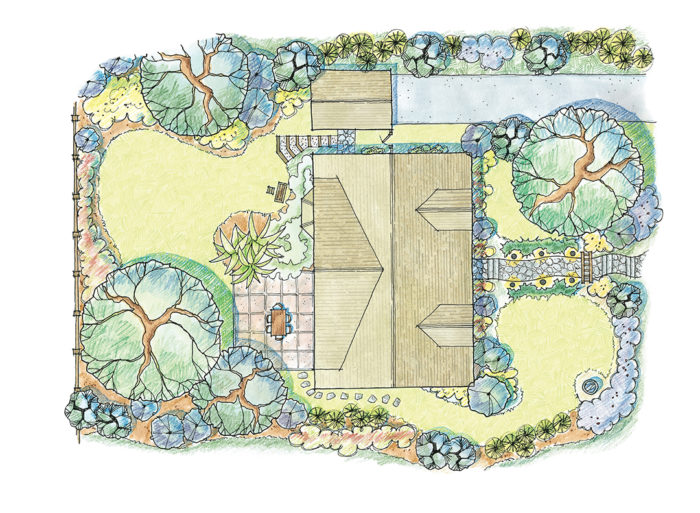 A well-designed garden plan helps visualize the complete space before implementation. Source: Fine Gardening
A well-designed garden plan helps visualize the complete space before implementation. Source: Fine Gardening
Understanding Your Garden’s Purpose and Vision
Before diving into the design process let’s clarify what you want from your outdoor space to create a garden that truly reflects your needs and preferences.
Defining Your Garden Goals
Start by writing down your garden dreams and must-haves. Do you want a peaceful retreat with zen elements like water features and meditation spots? Or maybe you’re dreaming of a vibrant entertainment space with a BBQ area and plenty of seating. Think about specific activities you’ll enjoy like growing fresh vegetables reading in a cozy corner or hosting outdoor dinner parties. Your goals will shape every design decision from plant selection to hardscape features. Consider your maintenance preferences too – are you excited about daily gardening or do you need a low-maintenance space? Don’t forget to factor in your local climate and how much time you can realistically dedicate to garden care.
 Initial planning sketch showing various garden zones and their intended purposes. Source: Gardenary
Initial planning sketch showing various garden zones and their intended purposes. Source: Gardenary
Identifying Primary Functions
Break down your garden space into functional zones based on how you’ll use them. You might need a play area for kids a dedicated workspace for potting plants or a shaded patio for afternoon relaxation. Map out high-traffic areas that need durable pathways and quiet corners perfect for peaceful activities. Consider the flow between different zones – your herb garden should be easily accessible from the kitchen while your composting area might work better in a back corner. Think about seasonal use too like creating sunny spots for spring flowers and covered areas for rainy days. Make sure each zone serves a clear purpose that aligns with your lifestyle and daily routines.
 Well-defined garden zones create organized and functional outdoor spaces. Source: The Garden Design Co
Well-defined garden zones create organized and functional outdoor spaces. Source: The Garden Design Co
Analyzing Your Garden Space
Before diving into design elements, you’ll need to understand your garden’s physical characteristics and environmental conditions. This analysis will serve as the foundation for all your future design decisions.
Measuring Your Available Area
Start by measuring the total square footage of your garden space using a long measuring tape or laser measure. Map out the perimeter measurements on graph paper using a 1:10 scale to create an accurate base plan. Don’t forget to mark permanent features like buildings trees fences or utility boxes on your drawing. Include measurements for existing pathways driveways or patios that’ll affect your design. Remember to note the location of essential utilities like water spigots electrical outlets or drainage systems.
 Drawing your garden to scale helps ensure accurate placement of all elements. Source: Lovely Greens
Drawing your garden to scale helps ensure accurate placement of all elements. Source: Lovely Greens
Evaluating Sun and Shade Patterns
Track how sunlight moves across your garden throughout the day using a sun mapping technique. Note which areas receive full sun (6+ hours) partial sun (4-6 hours) or full shade (less than 4 hours). Consider seasonal changes in sun patterns as summer and winter sun angles differ significantly. Watch how nearby buildings trees or structures cast shadows in different seasons. Create a simple diagram marking sunny spots during morning midday and afternoon hours. This information will be crucial for choosing the right plants and positioning garden elements like seating areas or vegetable beds.
:max_bytes(150000):strip_icc()/__opt__aboutcom__coeus__resources__content_migration__mnn__images__2017__03__sun-map-mosaic-05-23b8a600f6b54c73ba399bcde113774b.png) Sun mapping helps identify optimal locations for different types of plants based on light requirements. Source: Treehugger
Sun mapping helps identify optimal locations for different types of plants based on light requirements. Source: Treehugger
Assessing Soil Quality and Drainage
The success of your garden depends heavily on the quality of your soil and its ability to drain properly. These two factors will determine which plants will thrive in your space.
Testing Soil Composition
Start by grabbing a handful of soil and performing a simple texture test. Rub the soil between your fingers – if it feels gritty it’s sandy if it’s smooth and silky it’s silty and if it’s sticky it’s clay-based. You’ll want to test your soil’s pH level using an at-home testing kit from your local garden center. Most plants prefer a pH between 6.0 and 7.0. Don’t forget to check your soil’s organic matter content too. Rich healthy soil should be dark brown crumbly and full of earthworms. If your soil needs improvement add compost aged manure or other organic materials to enhance its structure and fertility.
 A simple jar test can help determine your soil’s composition and texture. Source: Southern Living Plants
A simple jar test can help determine your soil’s composition and texture. Source: Southern Living Plants
Identifying Drainage Issues
Check your garden’s drainage by digging a hole 1 foot deep and filling it with water. If the water takes more than 24 hours to drain you’ve got drainage problems. Look for signs like standing water puddles water-loving weeds or soil that stays soggy long after rain. Poor drainage can lead to root rot and unhealthy plants. You can fix drainage issues by adding organic matter installing French drains or creating raised beds. For severely compacted soil consider deep tilling or double digging to improve water movement. Pay special attention to low spots in your garden where water naturally collects.
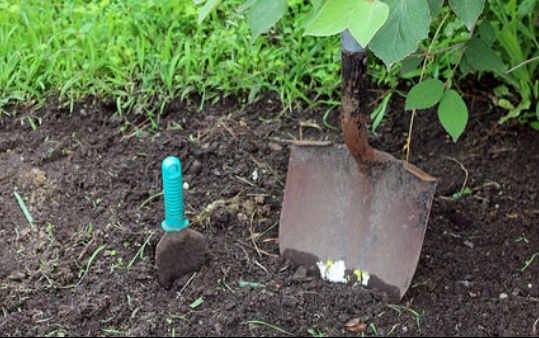 Performing a simple drainage test can identify potential water management issues in your garden. Source: Maine Garden Ideas
Performing a simple drainage test can identify potential water management issues in your garden. Source: Maine Garden Ideas
Creating a Basic Garden Sketch
Start your garden design journey by creating a simple sketch that’ll serve as your blueprint for the perfect outdoor space.
Drawing Your Garden’s Boundaries
Grab a piece of graph paper where each square represents one foot of your garden space. Start by drawing the perimeter of your garden using the measurements you’ve taken earlier. Make your sketch as large as possible on the paper to allow room for details. Include measurements along each boundary line for reference. Don’t worry about making it perfect a rough scale drawing is fine as long as the proportions are relatively accurate. Remember to note which direction is north on your sketch to help with future plant placement and sun pattern planning.
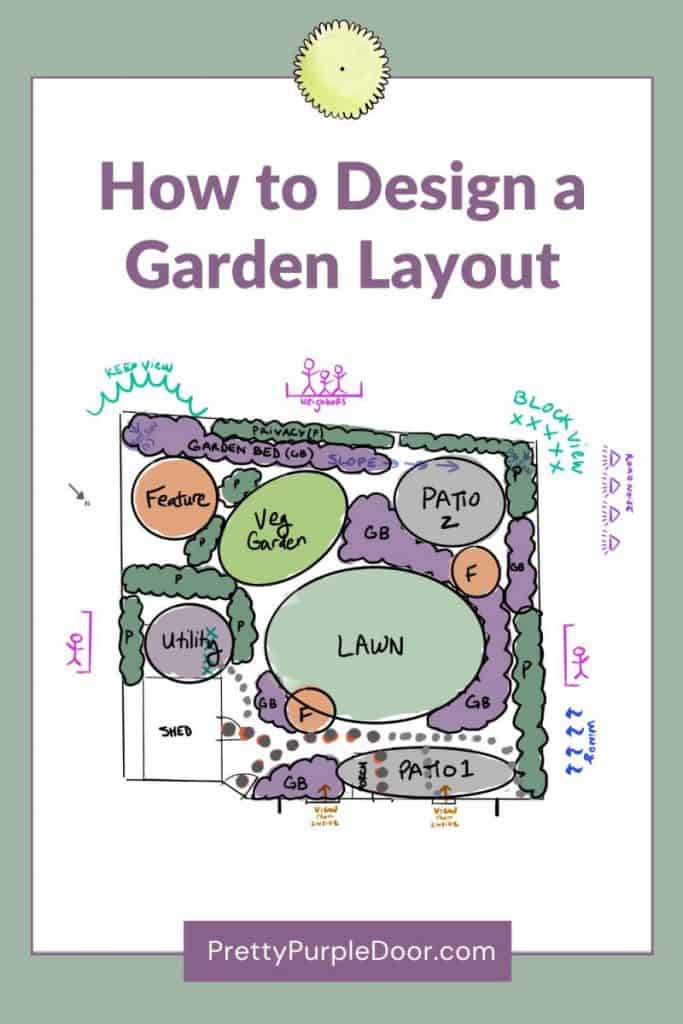 Using graph paper makes it easier to create a proportional garden design. Source: Pretty Purple Door
Using graph paper makes it easier to create a proportional garden design. Source: Pretty Purple Door
Marking Fixed Features
Plot all permanent structures and features that can’t be moved on your sketch. Include your house walls outdoor lights drainage points and utility connections. Mark the location of existing trees fences utility boxes AC units and permanent pathways. Use simple symbols or shapes to represent these features and create a legend to explain what each symbol means. Don’t forget to indicate windows and doors from your house that open into the garden space as these affect both traffic flow and viewing angles. Add measurements for these fixed features to ensure accurate spacing in your final design.
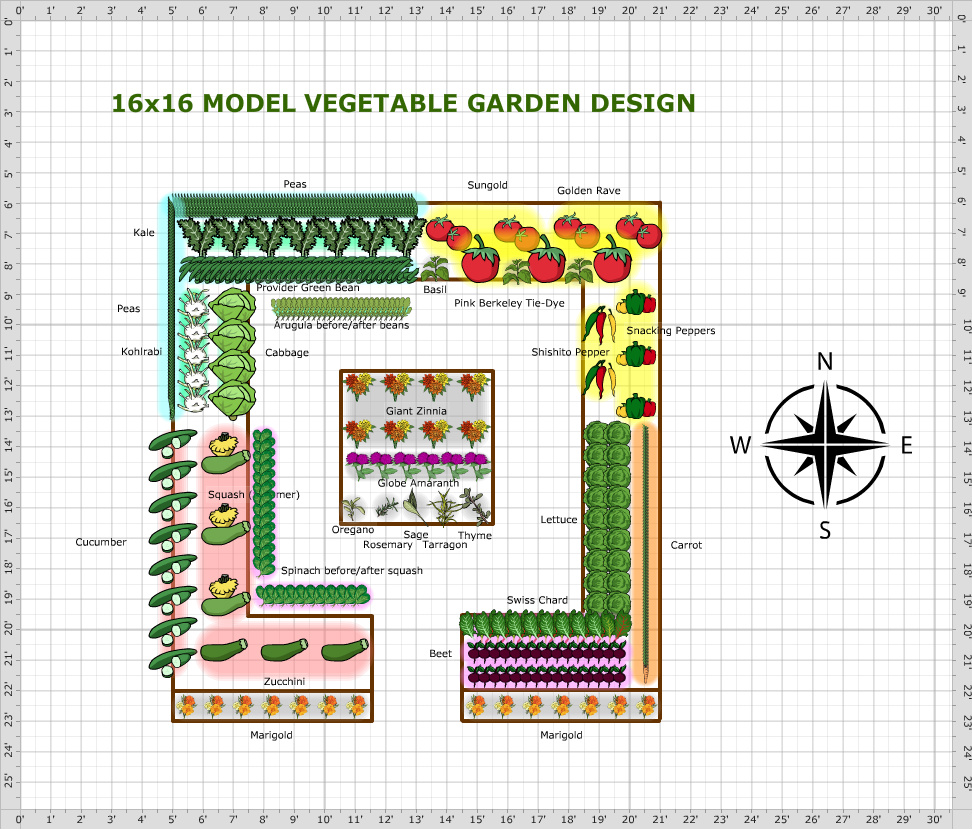 A detailed garden plan showing permanent features and structures that influence the design. Source: GrowVeg.com
A detailed garden plan showing permanent features and structures that influence the design. Source: GrowVeg.com
Planning Garden Zones
Effective garden zoning transforms your outdoor space into distinct areas that serve specific purposes while maintaining a cohesive flow.
Designating Activity Areas
Start by mapping out zones based on how you’ll use different parts of your garden. Create dedicated spaces for dining cooking gardening playing or relaxing. Position your dining area close to the kitchen door for easy access during meals. Set up your veggie garden where it’ll get 6-8 hours of sunlight daily. If you’ve got kids place their play area where you can see it from inside the house. Consider adding a quiet reading nook tucked away from high-traffic spots. Remember to factor in storage areas for tools equipment and outdoor furniture. Each zone should have clear boundaries using elements like paths hedges or changes in ground material.
 Different garden zones designed for specific activities create a well-organized outdoor space. Source: Jacksons Fencing
Different garden zones designed for specific activities create a well-organized outdoor space. Source: Jacksons Fencing
Creating Functional Spaces
Transform each zone into a practical space that works for your lifestyle. Add appropriate features to support each area’s purpose – install a sturdy dining table in the entertainment zone or raised beds in the vegetable garden. Include proper lighting for evening use especially in dining and pathway areas. Create transition spaces between zones using stepping stones or archways. Add seating options throughout the garden from bistro sets to built-in benches. Make sure pathways are wide enough for comfortable movement – at least 3 feet for main paths and 18 inches for secondary routes. Consider adding shade structures like pergolas or umbrellas in areas where you’ll spend extended time.
 A functional garden space with comfortable seating and appropriate plantings for the area. Source: The Garden Design Co
A functional garden space with comfortable seating and appropriate plantings for the area. Source: The Garden Design Co
Choosing Your Garden Style
Your garden style sets the mood and creates a unified look that reflects your personality and complements your home’s architecture.
Exploring Design Themes
Select a garden theme that matches your home’s style and your personal taste. Traditional gardens feature symmetrical layouts with classic elements like boxwood hedges rose gardens and formal paths. Modern gardens embrace clean lines minimal plantings and contemporary materials like steel or concrete. For a natural feel cottage gardens blend informal flower beds with climbing vines and mixed borders. Japanese gardens focus on simplicity with carefully placed rocks water features and pruned trees. Mediterranean styles work well in sunny spots featuring drought-resistant plants terracotta pots and gravel paths. Choose elements from different styles to create your unique blend but maintain consistency throughout your design.
 A formal garden design with structured layout and geometric patterns. Source: Fine Gardening
A formal garden design with structured layout and geometric patterns. Source: Fine Gardening
Selecting Color Schemes
Start with a color palette that creates the right atmosphere in your garden. Cool colors like blues purples and silvers create a calm serene feeling that makes spaces appear larger. Warm colors including reds oranges and yellows add energy and can make large spaces feel more intimate. Use the color wheel to plan combinations: complementary colors (opposite each other) create bold contrast while analogous colors (next to each other) offer harmony. Consider seasonal changes by selecting plants that provide color throughout the year. Include white flowers or silver foliage to brighten shady areas and create visual breaks between bold colors. Remember to factor in hardscape colors from paths walls and structures in your overall scheme.
:max_bytes(150000):strip_icc()/ms-how-to-create-a-colorful-garden-year-round-48b08bf8ecea4b05890e5ee2b3b7121e.jpg) A carefully planned color scheme creates visual harmony and seasonal interest. Source: Martha Stewart
A carefully planned color scheme creates visual harmony and seasonal interest. Source: Martha Stewart
Mapping Plant Locations
After establishing your garden’s zones and style it’s time to strategically plan where each plant will grow and thrive.
Considering Plant Heights
Start mapping your plants by creating distinct layers based on height. Place tall plants like trees and large shrubs at the back of borders against walls or fences to create a backdrop. Position medium-height plants such as flowering perennials and ornamental grasses in the middle section. Keep short plants like groundcovers creeping phlox and low-growing sedums at the front edges where they’ll be visible. This tiered approach called the “thriller spiller filler” method ensures all plants get proper sunlight and creates visual depth. Remember to account for viewing angles from inside your home and main garden paths when deciding plant heights.
Planning for Growth Patterns
Consider how plants spread and mature over time to avoid overcrowding. Fast-spreading plants like mint bamboo and certain groundcovers need extra space or contained areas to prevent them from overtaking neighbors. Check each plant’s mature width on the nursery tag and space them accordingly typically half the expected full width apart. Factor in growth rates too: slow-growing plants can be placed closer together for immediate impact while rapid growers need more room. Don’t forget to account for seasonal changes as some plants may die back in winter while others maintain their size year-round.
Designing Garden Paths and Access Points
Well-designed paths and access points create an inviting flow through your garden while providing practical navigation between different zones.
Determining Traffic Flow
Start by identifying your garden’s main entry and exit points including doors gates and frequently used areas. Map out primary routes that connect these high-traffic spots like the path from your back door to the garage or compost bin. Create wider paths (at least 4 feet) for main walkways where people often travel together or carry items. Add secondary paths (2-3 feet wide) to maintenance areas garden beds and quiet retreats. Consider natural walking patterns – people tend to take the shortest route between points so plan accordingly. Remember to account for wheelbarrows lawn mowers and garden carts when sizing paths. Position curves strategically to create interest but avoid sharp turns that feel awkward or unnatural.
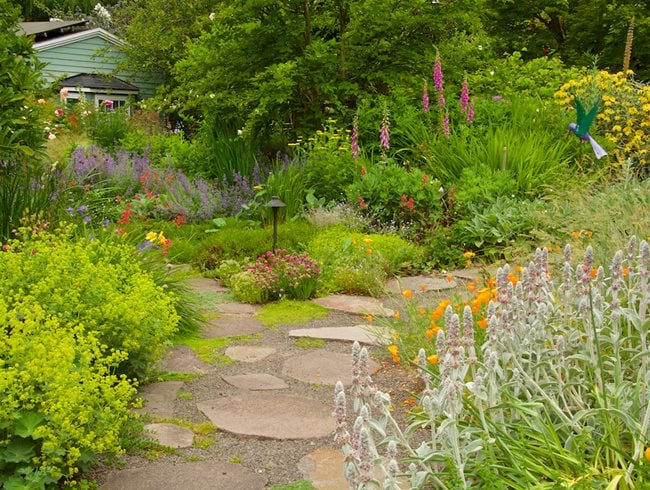 Well-designed garden paths guide visitors through the space while providing functional access. Source: Garden Design
Well-designed garden paths guide visitors through the space while providing functional access. Source: Garden Design
Selecting Path Materials
Choose materials that complement your garden style and home architecture while meeting practical needs. Gravel offers affordable coverage and good drainage but requires regular maintenance. Flagstone and pavers create elegant solid surfaces that last for decades though they’re more expensive upfront. Mulch and wood chips work well for casual paths but need yearly replacement. Match materials to usage – use sturdy surfaces for main walkways and softer materials for secondary paths. Consider your climate too – some materials get slippery when wet or too hot in direct sun. For eco-friendly options try permeable pavers or recycled materials. Mix different materials to define separate zones while maintaining visual flow through consistent border elements.
:max_bytes(150000):strip_icc()/SIP925039a-cfe59aae84c94ad89bf12a6c766f8237.jpg) Varied path materials can enhance garden aesthetics while serving different functional needs. Source: Midwest Living
Varied path materials can enhance garden aesthetics while serving different functional needs. Source: Midwest Living
Incorporating Garden Features
Garden features add personality and create focal points that transform your outdoor space into a captivating retreat. They’re essential elements that enhance both the functionality and aesthetic appeal of your garden design.
Adding Water Elements
Water features bring life movement and tranquility to your garden. Start by choosing the right size water feature for your space – whether it’s a small fountain wall-mounted waterfall or a decorative pond. Position water elements where they’ll be visible from key viewing points like seating areas or windows. Consider the sound level you want: gentle trickling works well for meditation spaces while larger fountains can help mask urban noise. Remember to plan for electrical outlets and water sources during installation. For low-maintenance options try self-contained fountains or pondless waterfalls that recirculate water and require minimal upkeep.
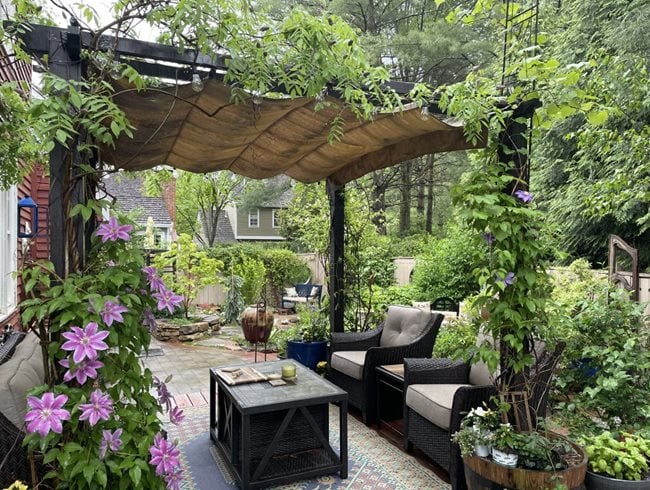 Water features create tranquil focal points and add sensory elements to the garden. Source: Garden Design
Water features create tranquil focal points and add sensory elements to the garden. Source: Garden Design
Planning Seating Areas
Create multiple seating zones to maximize your garden’s enjoyment throughout the day. Place a morning coffee spot in the east to catch early sun and a dinner patio in a sheltered area with afternoon shade. Space your seating areas at least 6 feet apart to maintain comfortable conversation distances. Include a mix of seating types like built-in benches weatherproof chairs and casual ottomans. Add side tables or flat surfaces near each seating area for drinks and plates. Don’t forget to factor in views from each spot – angle seats to face garden focal points or screen unsightly views with strategic plantings or decorative panels.
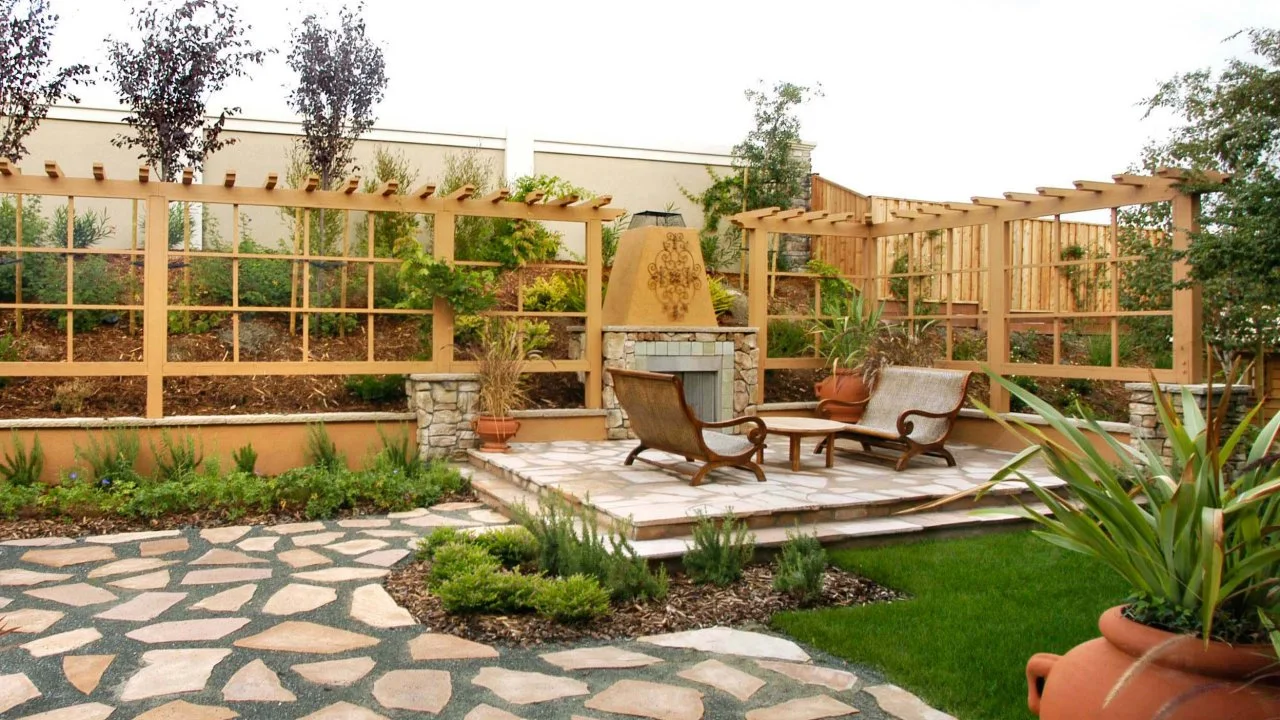 A well-designed seating area provides comfort and a perfect vantage point to enjoy the garden. Source: HGTV
A well-designed seating area provides comfort and a perfect vantage point to enjoy the garden. Source: HGTV
Planning for Seasonal Interest
A beautiful garden shouldn’t fade after spring blooms. Strategic planning ensures your garden stays vibrant through every season.
Selecting Year-Round Plants
Start with evergreen shrubs and trees as your garden’s backbone. Choose varieties like boxwood juniper or holly that maintain their foliage year-round. Mix in plants with different seasonal features like witch hazel for winter blooms dogwood for spring flowers and maple trees for fall color. Include ornamental grasses that provide structure in winter such as feather reed grass or blue fescue. Add perennials like hellebores that offer winter interest and daylilies that bloom in summer. Select plants with colorful berries like winterberry or beautyberry to attract birds and add visual interest during colder months.
 A well-planned garden provides visual interest throughout all seasons. Source: Fine Gardening
A well-planned garden provides visual interest throughout all seasons. Source: Fine Gardening
Creating Bloom Schedules
Map out your garden’s flowering timeline to ensure continuous color throughout the year. Start with early spring bulbs like snowdrops and crocus followed by mid-spring daffodils and tulips. Plan for summer showstoppers such as coneflowers black-eyed susans and salvias. Include late-summer bloomers like sedum and asters to bridge the gap into fall. Create a simple chart dividing the year into months marking when each plant blooms peaks and fades. Group plants by bloom time in your garden beds ensuring each area has something interesting to showcase as seasons change. Consider foliage color and texture to maintain interest between flowering periods.
:strip_icc()/year-round-excitement-garden-plan-1c7feb21-20af8a07da9241359ab7b661dd3df79b.jpg) A bloom schedule ensures continuous color and interest throughout the growing season. Source: Better Homes & Gardens
A bloom schedule ensures continuous color and interest throughout the growing season. Source: Better Homes & Gardens
Adding Structure and Focal Points
Garden structures and focal points create visual interest while providing practical functionality to your outdoor space. They help guide the eye and establish a sense of organization in your design.
Placing Garden Structures
Start by positioning larger structures like pergolas arbors or gazebos as anchor points in your garden. Place these elements where they’ll serve both practical and aesthetic purposes such as creating shade or framing a view. Consider adding a potting shed or greenhouse in a sunny spot that’s easily accessible from your main gardening areas. Keep structures proportional to your garden size – a massive pergola will overwhelm a small space while a tiny archway might get lost in a large garden. Integrate practical elements like storage benches or vertical planters along pathways or near seating areas. Remember to maintain clear sight lines between structures so your garden feels open and connected.
:strip_icc()/wooden-pergola-0fdd329f-6adc21cad5be4679a387e1ccc7bbac78.jpg) Pergolas provide structure, shade, and a focal point in the garden landscape. Source: Better Homes & Gardens
Pergolas provide structure, shade, and a focal point in the garden landscape. Source: Better Homes & Gardens
Creating Visual Interest
Use statement pieces like decorative containers ornamental trees or garden art to draw attention to specific areas. Position these focal points at the end of pathways or in spots visible from key viewing areas like your patio or kitchen window. Layer your focal points at different heights – mix tall sculptural plants with mid-height ornaments and ground-level features. Add outdoor lighting to highlight special features after dark using spotlights for trees or ambient lighting along pathways. Create rhythm by repeating similar elements throughout your garden such as a series of matching containers or architectural plants. Remember that less is more – too many focal points can make your garden feel cluttered and chaotic.
:strip_icc()/garden-wooden-arbor-3b61bf55-a038b358d8884cffbcc726eedf696d37.jpg) Garden arbors create beautiful focal points while supporting climbing plants. Source: Better Homes & Gardens
Garden arbors create beautiful focal points while supporting climbing plants. Source: Better Homes & Gardens
Considering Maintenance Requirements
A well-designed garden should match your available time and energy for upkeep. Planning for maintenance from the start helps create a sustainable garden that thrives with your level of care.
Planning Irrigation Systems
Start by dividing your garden into hydrozones based on water needs. Group thirsty plants together and drought-tolerant species in separate areas to maximize irrigation efficiency. Install a drip system or soaker hoses for beds and borders to deliver water directly to plant roots. Position sprinklers strategically to cover lawns without overspraying onto paths or structures. Add a smart controller to automate watering schedules based on weather conditions and seasonal changes. Consider installing a rain sensor to prevent overwatering during wet periods and include quick-connect points throughout the garden for hand watering. Remember to place water sources within 50 feet of all garden areas to ensure easy access with standard hose lengths.
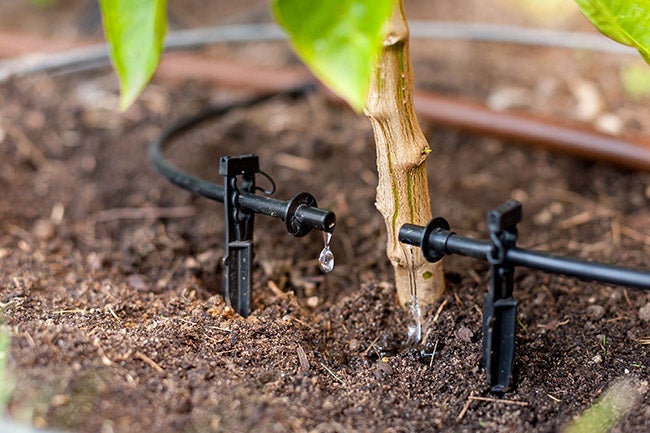 Efficient drip irrigation systems deliver water directly to plant roots, minimizing waste. Source: Rain Bird
Efficient drip irrigation systems deliver water directly to plant roots, minimizing waste. Source: Rain Bird
Establishing Care Schedules
Map out your maintenance tasks by season to stay organized and efficient. Create a monthly checklist that includes routine jobs like mowing pruning deadheading and fertilizing. Schedule heavy maintenance tasks like mulching and dividing perennials during optimal seasons. Plan for weekly tasks that take 15-30 minutes and monthly jobs requiring 2-3 hours. Group similar activities together to save time such as pruning all hedges on the same day. Use your garden zones to break down maintenance into manageable sections. Set reminders on your phone for time-sensitive tasks like fertilizing or pest control. Keep your tools organized and easily accessible to make routine maintenance more convenient.
Implementing Eco-Friendly Elements
Transform your garden into a sustainable ecosystem by incorporating these environmentally conscious features that benefit both nature and your outdoor space.
Adding Composting Areas
Set up your composting station in a partially shaded spot that’s easy to access but hidden from main viewing areas. Start with a dual-bin system: one for fresh materials and another for maturing compost. Size your bins based on your garden’s needs using this formula: 1 cubic foot per 100 square feet of garden space. Add brown materials (dry leaves fallen twigs) and green materials (kitchen scraps grass clippings) in a 3:1 ratio. Install a simple collection system to capture nutrient-rich compost tea which makes an excellent natural fertilizer. Keep your compost pile working efficiently by turning it every 2-3 weeks with a pitchfork.
Planning Wildlife Habitats
Create dedicated zones that attract local wildlife by incorporating native plants berries and water features. Install bird feeders at varying heights (4-6 feet off the ground) and place them near protective shrubs where birds can quickly seek shelter. Add a shallow water source like a bird bath or small pond with gently sloping sides to accommodate different creature sizes. Plant butterfly-friendly flowers in clusters and include host plants like milkweed for monarch butterflies. Create small brush piles using fallen branches to provide shelter for beneficial insects and small animals. Leave some areas of your garden unmown to create natural habitats for ground-dwelling wildlife.
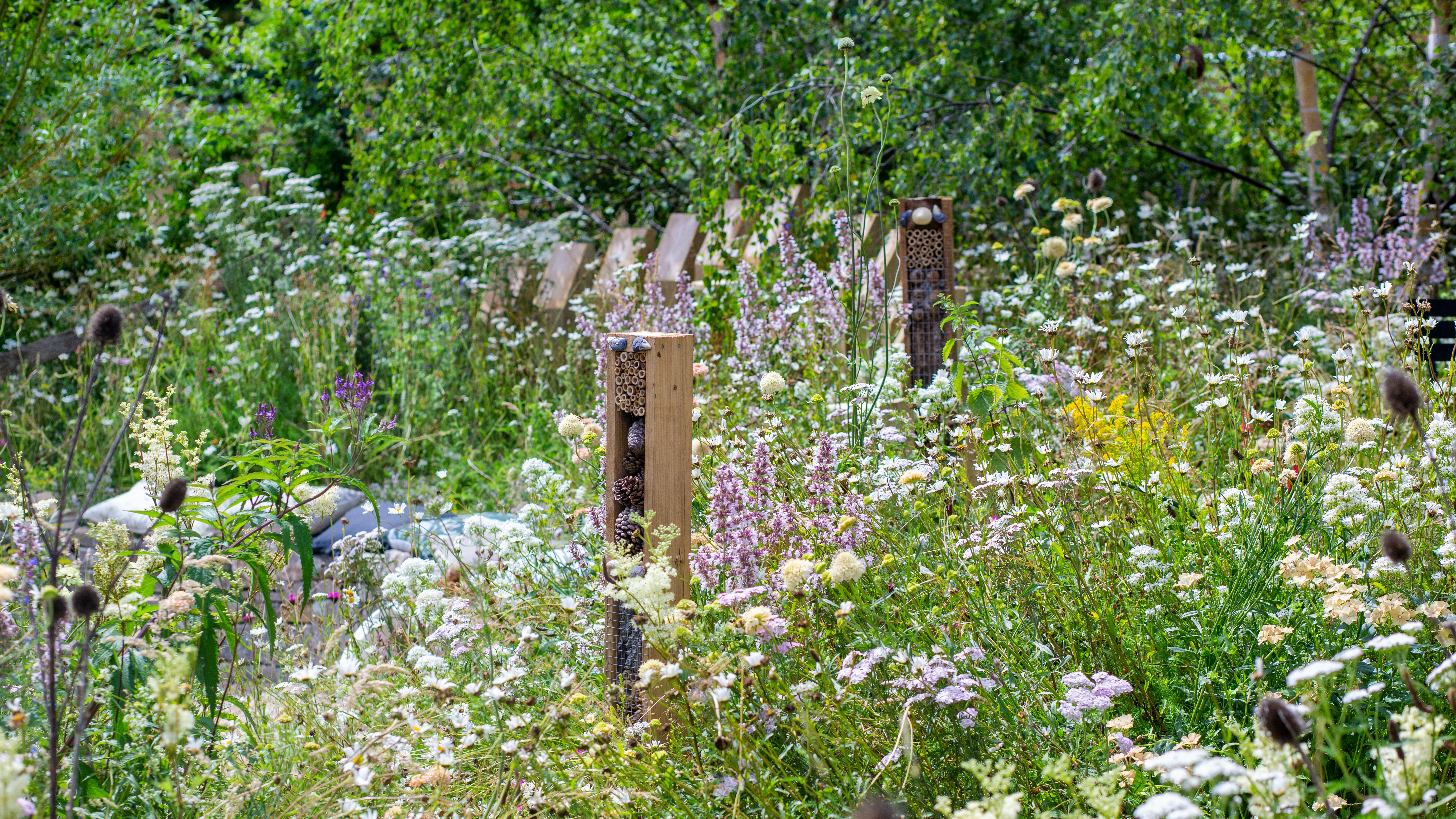 Native plants and diverse habitats attract beneficial wildlife to your garden. Source: Homes and Gardens
Native plants and diverse habitats attract beneficial wildlife to your garden. Source: Homes and Gardens
Creating Garden Storage Solutions
Efficient storage solutions are essential for maintaining an organized and functional garden space. Smart storage planning helps keep your tools accessible and protected while maximizing available space.
Organizing Tool Storage
Create a dedicated tool storage system that’s both practical and weather-resistant. Install pegboards or wall-mounted racks to hang frequently used tools like spades shovels and rakes. Use weatherproof containers or bins to store smaller items such as pruners trowels and gardening gloves. Label everything clearly and group similar tools together for easy access. Consider adding a potting bench with built-in storage drawers or shelves to keep supplies organized. Install hooks at different heights to accommodate tools of various sizes and add magnetic strips for metal tools. Place frequently used items at eye level and seasonal tools on higher shelves.
Planning Work Areas
Set up distinct work zones to streamline your gardening tasks. Position a potting station near your tool storage with enough counter space for soil mixing and transplanting. Include storage underneath for potting soil fertilizers and empty containers. Create a cleaning area with access to water and good drainage for washing tools and harvested produce. Add a dedicated space for storing bulk materials like mulch compost and soil amendments using sturdy bins or compartments. Consider installing a fold-down workbench to save space in smaller gardens. Ensure proper lighting in all work areas for early morning or evening gardening sessions.
Fine-Tuning Your Garden Layout
Take time to review your garden layout on paper before making permanent changes. Walk through your planned paths and zones to ensure they feel natural and functional. Adjust elements on your sketch as needed to optimize flow between spaces ensuring easy access to maintenance areas and focal points.
Fine-Tuning Your Garden Layout (continued)
Test out seating arrangements by placing temporary furniture in your designated spots. Consider viewing angles from different positions in the garden and from inside your home. Make sure your focal points are visible from key viewing areas and that your garden has a natural progression that guides visitors through the space. Verify that your plant selections match your soil conditions, sun exposure, and climate zone. Double-check your measurements to ensure proper spacing between plants and adequate room for growth. Remember that a well-designed garden evolves over time – be prepared to make adjustments as you see how your garden develops and how you use the space.
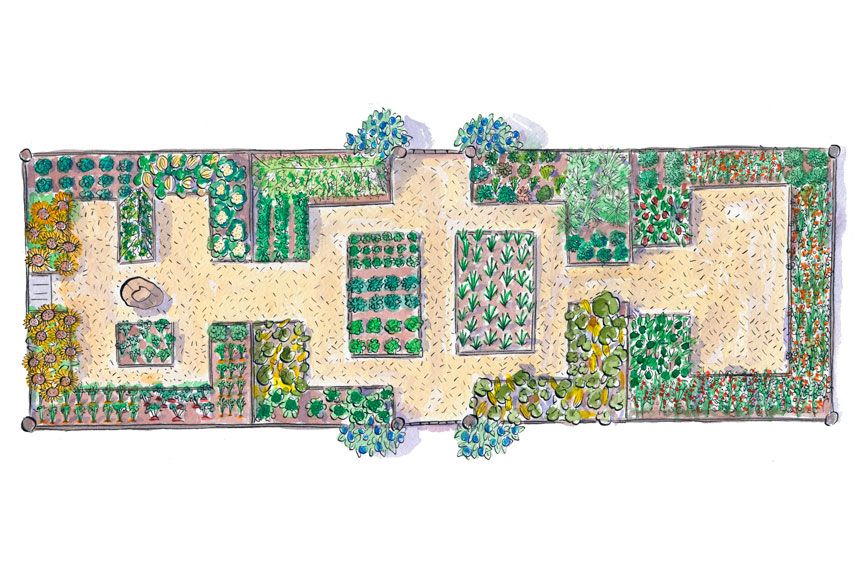 A comprehensive garden plan integrates all design elements into a cohesive whole. Source: Country Living Magazine
A comprehensive garden plan integrates all design elements into a cohesive whole. Source: Country Living Magazine
By following these 15 steps, you’ll create a garden layout that’s not only beautiful but functional and sustainable. Remember that the best gardens reflect the personalities and needs of their owners while working in harmony with nature. Enjoy the process of creating your perfect outdoor space, and don’t be afraid to adapt and evolve your design as you learn what works best for you and your garden.